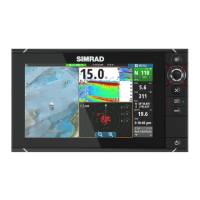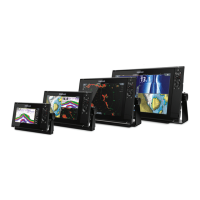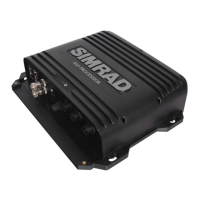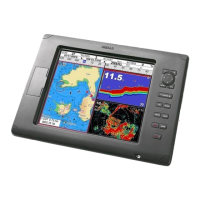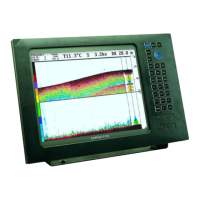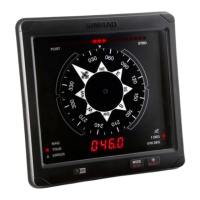Radar symbology
Radar symbology defined in the Radar Settings panel can be turned on/off collectively. See
the radar panel illustration showing optional radar items.
Target trails
You can set how long the trails generated from each target on your radar panel remain. You
can also turn OFF target trails.
Ú
Note: True motion is recommended when using Target trails
Clearing target trails from the panel
When target trails are displayed on the panel, the radar menu expands to include an option
where you can clear target trails from your radar panel temporarily. The target trails start to
appear again unless you switch them off as described above.
The radar palette
Different colors (palettes) can be used to represent detail on your radar panel.
Radar orientation
Radar orientation is indicated on the upper left corner of the radar panel as either HU
(Heading UP), NU (North Up) or CU (Course up).
Head-up
In head-up mode, the heading line on the PPI is oriented on the 0° on the bearing scale and
towards the top of the screen. The radar image is displayed relative to own ship, and when
the ship turns the radar image rotates.
Ú
Note: Head-up is only available in relative motion mode, and it is the only orientation
mode available if the radar is not connected to a heading source.
North up
In North up mode the 0° indication on the PPI represents north. The heading line on the PPI
is oriented according to own ship heading obtained from the compass. When the ship turns
the heading line changes its direction according to the ship's heading, while the radar image
remains stabilized.
The North up orientation is not available if no heading source is connected to the radar. If
heading data is lost, the system will automatically switch to Head-up orientation.
Course up
In Course up mode, the top of the bearing scale indicates the ship’s true course measured
from north at the time Course up was activated. When the ship turns the bearing scale
remains fixed, while the heading line rotates with the ship's yawing and course change.
The Course up orientation is reset by re-selecting the Course up mode.
Radar motion mode
Radar motion is indicated on the upper left corner of the radar panel as either TM (True
motion) or RM (Relative motion).
Relative motion
In relative motion your vessel remains in a fixed location on the Radar PPI, and all other
objects move relative to your position.
You select the position of the fixed location as described in "Offsetting the PPI center" on page 60.
True motion
In true motion your vessel and all moving targets move across the Radar PPI as you travel. All
stationary objects remain in a fixed position. When the vessel’s symbol reaches 75% of the
PPI radius (A), the radar image is redrawn with the vessel symbol re-positioned (B) 180°
opposite the current heading bearing.
Radar | NSS evo3S Operator Manual
59

